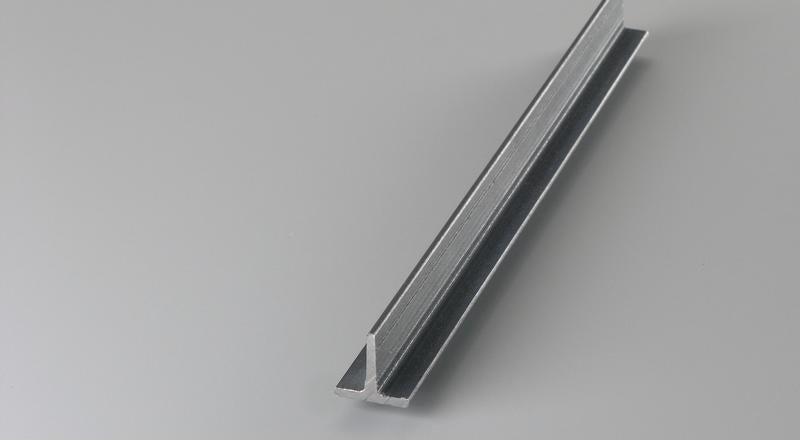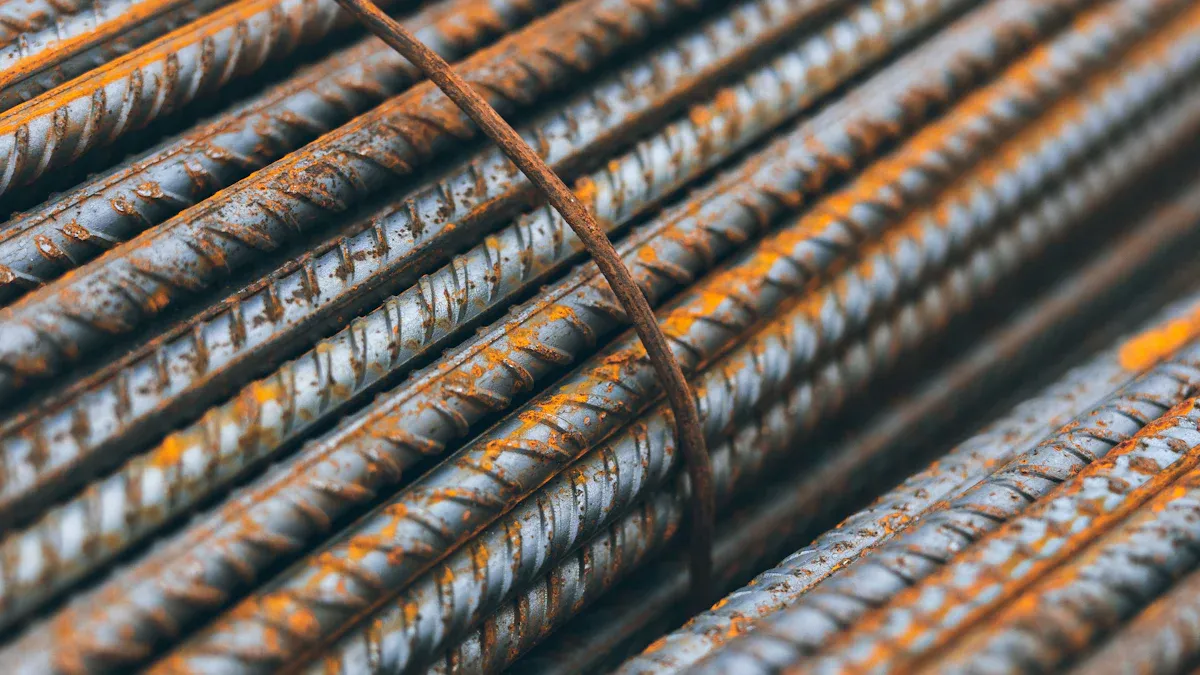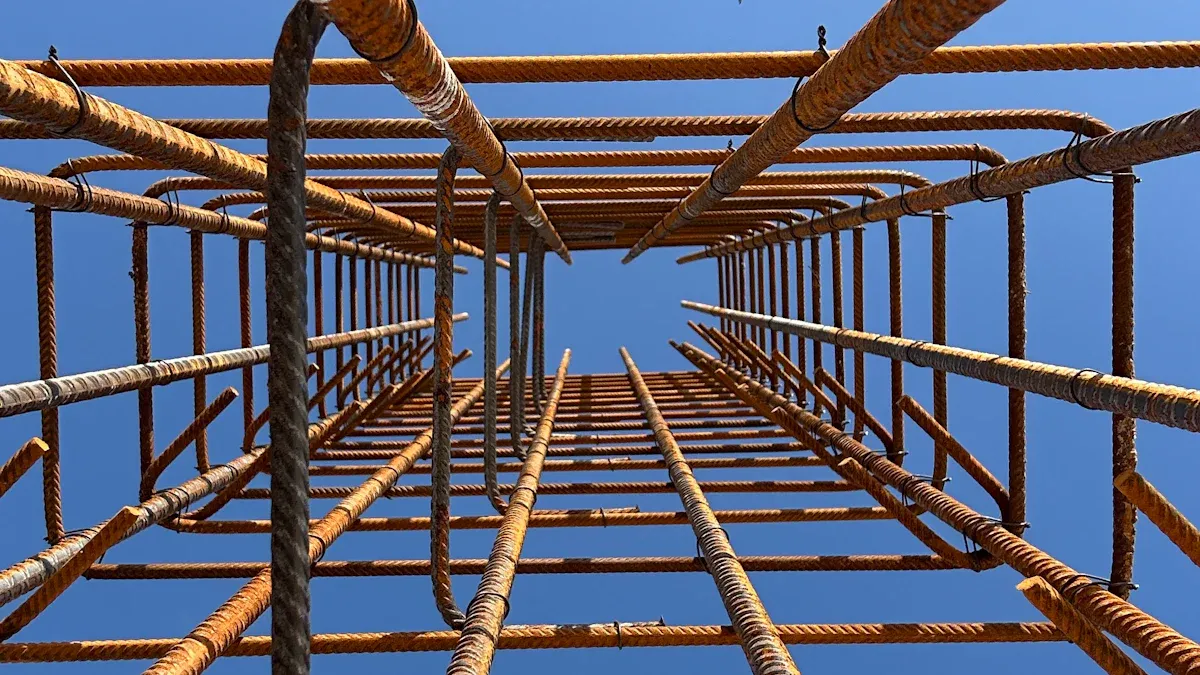
What Are Steel T-Bars and Their Uses?
Share
Table Of Content
Table Of Content

Steel T-bars, also known as Steel Tee Bars, are components shaped like the letter T, designed for projects requiring strength and durability. Hot Rolled Steel Tee Bars are particularly effective for supporting heavy loads, making them essential in construction and manufacturing. These bars are commonly used to hold beams, reinforce structures, and create sturdy frames. Whether you need a standard steel T bar or a custom design, they provide reliable performance. From bridges to machinery, Steel Tee Bars and Hot Rolled Steel Tee Bars play a crucial role in building modern structures and innovations.
Key Takeaways
- Steel T-bars are tough parts shaped like a T. They are great for holding heavy weights in building and factories.
- Hot-rolled T-bars work well for big, strong projects. Cold-rolled T-bars are better for exact, detailed tasks.
- Stainless steel T-bars do not rust, so they are good for outdoor or water-related uses.
- Custom steel T-bars can be made to fit special needs. This makes them stronger and a better match for projects.
- Picking the right T-bar type and finish helps it last longer and work better, saving repair costs.
Understanding Steel T-Bars
What Is a Steel T-Bar?
A steel T-bar is shaped like the letter T. It is strong and stable, perfect for holding heavy loads. Steel T-bars are used in construction, factories, and transportation. They help support beams, strengthen frames, and build tough structures. These bars can be used in big projects or small tasks.
Key Characteristics of Steel T-Bars
Steel T-bars have important features that make them useful. Here are some key traits:
| Property | Description |
|---|---|
| Ductility | Can bend or stretch without breaking because of low carbon. |
| Weldability | Easy to weld with common tools for many projects. |
| Machinability | Simple to shape for precise parts and detailed designs. |
| Cost-Effectiveness | Cheaper than special steels, saving money for many uses. |
These traits help steel T-bars handle stress and fit different needs. Their mix of strength and flexibility makes them a top choice for builders.
How Steel T-Bars Are Made
Steel T-bars are made to be strong and exact. They are created using hot rolling or cold rolling. Hot rolling shapes steel at high heat for a tough product. Cold rolling smooths the surface and makes sizes more accurate.
Steel T-bars follow rules to ensure quality. For example:
| Standard | Description |
|---|---|
| ASTM A572 | Lists five grades of strong steel for building projects. |
| ASTM A588 | Covers strong steel for outdoor building designs. |
| ASTM A992 | Sets rules for steel types used in construction. |
These rules make sure steel T-bars are safe and work well. By following them, makers create parts you can trust for your work.
Specifications of Steel T-Bars
Standard Dimensions and Sizes
Steel T-bars come in many sizes for different projects. These sizes follow industry rules to ensure they are reliable. Below is a table showing common standards:
| Specification | Description |
|---|---|
| ASTM | Sets rules for testing and certifying materials. |
| SAE | Focuses on steel standards for vehicles. |
| EN | European rules for material quality. |
| JIS | Japanese standards for metal materials. |
Steel T-bars have exact size limits called tolerances. These tolerances help the bars fit perfectly in designs. Here’s a table of typical tolerances:
| Specified Sizes (Inches) | Over (Inches) | Under (Inches) |
|---|---|---|
| .044 to 1/16” excl | 0.001 | 0.001 |
| 5/16” to 1/2” excl | 0.0015 | 0.0015 |
| 1/2 to 1” excl | 0.002 | 0.002 |
| 1” to 1-1/2” excl | 0.0025 | 0.0025 |
| 1-1/2” to 4” excl | 0.003 | 0.003 |
| 4-1/8” to 4-1/2” excl | 0.005 | 0.005 |
| 4-9/16” to 6” excl | 0.008 | 0.008 |
These sizes and tolerances make T-bars dependable for building strong structures.
Material Composition and Grades
Steel T-bars are made from different materials with special features. Most are low-carbon steel, which bends and welds easily. Stainless steel T-bars resist rust and are great for outdoor use. High-strength steel is used for heavy-duty jobs.
Steel grades are based on how strong the material is. Common grades include ASTM A36 for general use, ASTM A572 for strong projects, and ASTM A588 for weatherproof designs. These grades help you pick the right T-bar for your project.
Weight and Load-Bearing Capacity
The weight of a T-bar affects how much it can hold. Heavier T-bars carry more weight, making them good for big projects. The load capacity depends on size, material, and design.
Here’s a chart showing thickness and weight tolerances for different sizes:

Knowing these details helps you choose the best T-bar for safe and efficient work.
Surface Finishes and Coatings
Steel T-bars often need finishes or coatings to last longer. These treatments shield the steel from things like water, chemicals, and heat. They also make the T-bars look better for different uses.
There are many finishes and coatings to pick from. Here are some popular ones:
- Galvanized Coating: Adds a zinc layer to stop rust. It’s great for outdoor or wet places.
- Powder Coating: Uses dry powder baked onto the steel. It makes a tough surface that resists scratches and fading.
- Painted Finish: A cheap way to protect steel. Paint also lets you pick a color.
- Polished Finish: Makes the steel shiny and reflective. Perfect for decoration or visible areas.
- Epoxy Coating: Adds a thick layer that fights chemicals and wear. It’s ideal for factories or tough jobs.
Tip: Think about where the T-bar will be used. For example, galvanized coatings are best outside, while polished finishes work indoors.
Finishes and coatings help steel T-bars last longer and need less care. Choosing the right one keeps them strong and looking good for years.
Types of Steel T-Bars

Hot-Rolled Steel T-Bars
Hot-rolled steel T-bars are made by heating steel very hot. The steel is shaped while it’s still heated above 1000°F. This process makes the bars strong and tough for heavy jobs. These T-bars are used in building bridges and tall structures. They are also great for heavy machines because they handle stress well.
Hot-rolled T-bars have a rougher surface than other types. But they are strong and cost less, making them a favorite choice. Here’s a simple comparison of hot-rolled T-bars with others:
| Characteristic | Hot-Rolled Steel T-Bars | Other Types |
|---|---|---|
| Processing Temperature | Over 1000°F | Varies (often lower) |
| Chemical Composition | 0.26% Carbon, 0.2% Copper, 99% Iron | Varies by type |
| Ultimate Tensile Strength | 58,000 psi | Varies by type |
| Yield Tensile Strength | 47,700 psi | Varies by type |
| Applications | Bridges, buildings, heavy machines | Varies by type |
Tip: Pick hot-rolled T-bars for strong and durable big projects.
Cold-Rolled Steel T-Bars
Cold-rolled steel T-bars are made at room temperature. This gives them a smooth surface and exact sizes. They are perfect for jobs needing precision, like car parts and tools. The cold rolling process makes the steel harder and stronger for tough tasks.
Unlike hot-rolled T-bars, cold-rolled ones don’t need extra shaping. This saves time when accuracy is important. But making cold-rolled T-bars takes longer. Even so, they are reliable for projects needing exact measurements.
Stainless Steel T-Bars
Stainless steel T-bars resist rust and don’t corrode easily. They are made with steel and chromium, which protects the surface. This makes them great for outdoor or wet places like bridges and ships. You’ll also see them in decorative designs.
These T-bars have a shiny finish, giving them a neat look. They cost more than other types but last longer and need little care. This makes them worth the price for long-term use.
Custom Steel T-Bars
Custom steel T-bars let you design parts to match your needs. Unlike regular T-bars, these are made to fit special sizes, materials, or finishes. They are perfect for projects where standard options don’t work.
Why Pick Custom Steel T-Bars?
Custom T-bars have many benefits:
- Precision Fit: Pick exact sizes to make sure they fit perfectly.
- Material Selection: Choose materials like stainless steel, carbon steel, or alloy steel.
- Enhanced Durability: Add coatings like galvanization or powder coating to stop rust and wear.
- Unique Designs: Make T-bars with special shapes for looks or specific uses.
Tip: Custom T-bars are great for industries like aerospace, building design, and heavy machines where accuracy matters most.
How Are Custom Steel T-Bars Made?
Special tools are used to make custom T-bars. These include laser cutting, CNC machines, and rolling methods. You can work with engineers to design them and meet rules like ASTM or EN.
Uses of Custom Steel T-Bars
Custom T-bars are best for projects needing special solutions. For example:
- Architectural Projects: Special designs for bridges, buildings, or art pieces.
- Industrial Equipment: Strong parts for heavy machines.
- Marine Applications: Rust-proof T-bars for ocean platforms.
Choosing custom steel T-bars helps you create useful and creative solutions. This makes your project unique while meeting all strength and design needs.
Applications of Steel T-Bars

Construction and Infrastructure
Steel T-bars are very important in building projects. They are used to strengthen concrete, acting like rebar for extra support. This helps buildings and bridges stay strong and last longer. Their strength makes them perfect for holding up beams and columns in tall buildings and factories.
Steel T-bars are also used in roofs and floors. Their T-shape spreads weight evenly, reducing pressure on other parts. This makes them great for big projects like stadiums and warehouses.
Did You Know? Steel T-bars are used in earthquake-safe designs. Their strength and flexibility help buildings survive earthquakes, saving lives and property.
Manufacturing and Fabrication
Steel T-bars are useful in making and shaping products. They are easy to cut and weld into exact shapes. You’ll find them in furniture frames, where they are both strong and stylish. Their smooth finish also makes them good for decoration.
Factories use steel T-bars in machines like gears, shafts, and pulleys. Their toughness ensures these parts last a long time. This makes them essential in workshops and industries.
Here’s a table showing their uses in manufacturing:
| Sector | Application Description |
|---|---|
| Furniture | Used for strong frames and stylish decorative parts. |
| Industrial Equipment | Found in machine parts like gears and pulleys for durability. |
Automotive and Transportation
Steel T-bars are important in cars and transportation. They are used in car frames to make vehicles strong and safe. This helps cars handle impacts and carry heavy loads without breaking.
They are also used in train tracks and ships. Their ability to resist rust and hold heavy weights makes them perfect for tough conditions. Whether for cars, trains, or ships, steel T-bars provide the strength needed for smooth operation.
Here’s a quick table of their uses in transportation:
| Industry | Application Description |
|---|---|
| Automotive | Used in car frames for safety and strength. |
| Transportation | Great for train tracks and ships due to durability and rust resistance. |
Steel T-bars are flexible and useful in many industries. Their ability to meet different needs makes them a key part of modern engineering.
Marine and Offshore Applications
Steel T-bars are important for marine and offshore work. They are strong and resist rust, making them great for tough conditions. In shipbuilding, they strengthen hulls and decks. Offshore platforms also use them for support in oil and gas projects.
Stainless steel T-bars are often chosen for marine jobs. They contain chromium, which stops rust from saltwater. This makes them last longer in wet and extreme places. For example, docks, piers, and seawalls use them to handle constant water exposure.
Tip: Use T-bars with galvanized or epoxy coatings for marine projects. These finishes give extra protection from water and chemicals.
Steel T-bars help keep things safe. They hold heavy loads and stay stable in rough seas. Whether building ships or rigs, they provide the strength you need.
Other Industrial Uses
Steel T-bars are useful in many industries. In energy, they support wind turbines and solar panels. Their toughness helps these structures handle strong winds and heavy weights.
Factories use T-bars in conveyor belts and storage racks. They can hold heavy items without bending. Mining also uses them to strengthen tunnels and shafts.
Here’s a table of their industrial uses:
| Industry | Example Uses |
|---|---|
| Energy | Wind turbine bases, solar panel frames |
| Manufacturing | Conveyor systems, storage racks |
| Mining | Tunnel supports, shaft reinforcements |
Note: Steel T-bars save money for industrial projects. Their long life means less maintenance, lowering costs over time.
From energy to factories, steel T-bars are strong, reliable, and affordable solutions.
Steel T-bars are strong and useful in many industries. They are tough and resist rust, perfect for heavy jobs. Different types like hot-rolled, cold-rolled, and stainless steel fit various needs. These bars are used in building, cars, and factories. They are durable and save money over time. From bridges to furniture, steel T-bars stay reliable and strong.
FAQ
What are the main advantages of using steel T-bars?
Steel T-bars are strong, long-lasting, and flexible. They hold heavy weights and resist damage, making them great for building, factories, and transport. Their T-shape spreads weight evenly, lowering pressure on structures. You can also design them to fit special needs.
How do you choose the right steel T-bar for your project?
Think about the weight, location, and purpose. For outdoor areas, use stainless or galvanized T-bars to stop rust. For exact work, cold-rolled T-bars are the best choice. Always check the steel grade and size to match your project.
Can steel T-bars be recycled?
Yes, steel T-bars can be fully recycled. Recycling helps save materials and reduces waste. You can reuse them in new projects or send them to recycling centers. This makes steel T-bars a smart choice for eco-friendly building and manufacturing.
Are steel T-bars easy to install?
Steel T-bars are simple to set up. Their even shape and size make cutting and welding easier. You can adjust them to fit your design. With basic tools and good planning, you can install them quickly.
What coatings are best for protecting steel T-bars?
Pick coatings based on where they’ll be used. Galvanized coatings stop rust in wet places. Powder coatings prevent scratches, while epoxy coatings protect from chemicals. For decoration, polished or painted finishes are good options.
